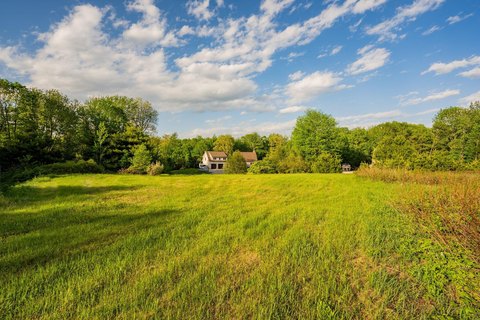A Dream of Land Ownership
For years, Sam and Maria had dreamed of building their perfect home. They had spent countless weekends visiting open houses, but something felt wrong. Customizing their own space from the ground up was becoming increasingly appealing. As they stood at the edge of a sprawling, undeveloped plot of land on the outskirts of town, Maria looked at the view of the rolling hills and imagined the home they could create. This land represented an investment and a blank canvas for their future.
Like Sam and Maria, many people today are discovering the allure of purchasing land. Land sales have become increasingly popular in recent years, whether for building a dream home, farming, or simply holding as an investment. However, the market for land, like all real estate, can be unpredictable and is subject to various factors—from location and zoning regulations to broader economic conditions.
This article will explore the current state of the land market, key statistics about land for sale, and important factors to consider when purchasing land near you.
The Growing Interest in Land Ownership
Owning land has always been a key part of the American dream. Historically, landownership represented wealth and opportunity, and while the market has evolved, the desire to own land remains strong today. With the rising costs of homes, many buyers are turning to land purchases as a more affordable or flexible alternative.
- Land as a Long-Term Investment
For investors, land offers a unique opportunity. Unlike homes or buildings that can depreciate over time, land is often seen as a long-term asset that appreciates, particularly in growing or developing areas. As population growth in suburban and rural areas continues, undeveloped land becomes more valuable.
- According to the National Association of Realtors (NAR), land prices in the U.S. have steadily increased over the past decade. In 2023, the median price per acre for residential land was approximately $25,000, up from $12,000 per acre in 2013 (NAR, 2023). These prices can climb significantly higher in areas close to urban centers or regions with high demand for new housing developments.
- Land prices have surged dramatically in certain states, particularly in the West and Northeast. For example, in California, the average cost per acre for residential land near urban areas can range from $100,000 to $250,000, depending on location and development potential (Land.com, 2024). By contrast, in more rural areas of the Midwest, prices may be much lower, averaging $5,000 to $10,000 per acre.
- Rural vs. Urban Land Demand
One of the key trends driving the current land market is the increased demand for rural and suburban land. The COVID-19 pandemic dramatically reshaped people’s preferences for where to live. Remote work, the desire for more space, and concerns about urban density have all contributed to a growing interest in rural areas.
- Rural land sales saw a significant jump during the pandemic. A report from Lands of America found that rural land sales increased by 19% in 2021. That trend continued into 2023 as buyers sought larger properties outside urban centers (Lands of America, 2023).
- Urban and suburban land is still in high demand, particularly near growing metropolitan areas. The limited availability of land in cities has led to higher prices, with developers and investors looking for opportunities to purchase land for housing developments, commercial properties, or mixed-use projects.
Important Factors to Consider When Buying Land
Purchasing land is a major decision that requires careful consideration. Unlike buying an existing home, where you can immediately assess the structure and location, land purchases come with unique challenges. Here are some key factors to consider when buying land near you.
- Location, Location, Location
The importance of location in real estate cannot be overstated. When buying land, you must consider its value and potential for growth and development.
- Proximity to urban areas, access to utilities (such as water, electricity, and sewage), and nearby amenities like schools, hospitals, and shopping centers can all influence land value. According to Zillow, land within a 30-minute drive of a major city can command prices 20-50% higher than land further away from urban centers (Zillow, 2023).
- Additionally, zoning regulations are crucial in determining what you can do with the land. Residential, commercial, agricultural, and industrial zoning have different restrictions, so verifying zoning laws before purchasing is essential. Local government websites often provide detailed maps and guidelines for zoning restrictions.
- Topography and Soil Quality
The physical characteristics of the land can greatly affect its usability and value. Is the land flat or hilly? Are there any bodies of water on the property? Is the soil quality suitable for construction, farming, or other uses? These are all questions to ask during the evaluation process.
- Land prone to flooding or poor soil quality may require additional investments to make it suitable for building or farming. It is advisable to conduct a thorough survey of the land and, in some cases, hire a geotechnical engineer to assess the soil.
According to the U.S. Department of Agriculture (USDA), soil quality can influence land prices, especially in areas where agriculture is a primary industry. For example, in states like Iowa, known for its fertile soil, agricultural land prices are significantly higher due to the potential for high crop yields (USDA, 2023).
- Infrastructure and Utilities
One of the biggest challenges in purchasing undeveloped land is ensuring access to essential utilities. Unlike buying an existing home, where water, electricity, and sewage systems are already in place, landowners are often responsible for bringing these services to their property.
- In rural areas, the cost of connecting to utilities can be substantial. According to the National Rural Electric Cooperative Association (NRECA), extending electricity lines to a rural property can cost between $10,000 and $30,000, depending on the distance from the nearest grid (NRECA, 2024).
- Access to water can also be a challenge. Some rural properties require the drilling of wells, which can cost anywhere from $5,000 to $15,000, depending on the depth and location of the water table. When considering the overall investment, factoring these costs into your budget is important.
Trends and Statistics: Land for Sale in 2024
To get a clearer picture of the current state of the land market, let us let us take a look at some key statistics:
- Median land price (national): The National Association of Realtors (NAR) reports that the median price for an acre of residential land in the U.S. is around $25,000 (NAR, 2023).
- Top states for land purchases: Texas, Florida, and California remain the most popular states for land purchases, with Texas leading the pack due to its abundance of affordable rural land (Land.com, 2024).
- Increased demand for rural land: Sales of rural land increased by 19% during the pandemic, and the trend continues, especially in states like Montana and Tennessee, where buyers seek large plots of land for recreational and residential use (Lands of America, 2023).
Tips for Buying Land Near You
If you are you are in the market for land, here are some tips to help guide your search:
- Work with a Real Estate Agent Specializing in Land
Buying land can be more complex than purchasing a home, so working with a real estate agent specializing in land transactions is crucial. They can help you navigate zoning regulations, negotiate prices, and understand the intricacies of the land market in your area.
- Conduct a Land Survey
Before making an offer, it is important to have the land surveyed by a professional. A land survey will provide critical information about property boundaries, easements, and potential issues, such as flood zones or encroachments.
- Consider Future Development Plans
When purchasing land, think about its long-term potential. Are there plans for new infrastructure or housing developments nearby? Investing in land near future developments can increase the value of your property over time.
Conclusion: A World of Opportunity in Land Ownership
For buyers like Sam and Maria, purchasing land represents more than just a real estate transaction—it is an investment in their future. Whether you are looking to build your dream home, start a farm, or hold the land as an investment, the market for land near you offers a world of possibilities. By carefully considering factors like location, zoning, and utilities, you can make an informed decision that will serve you for years.














